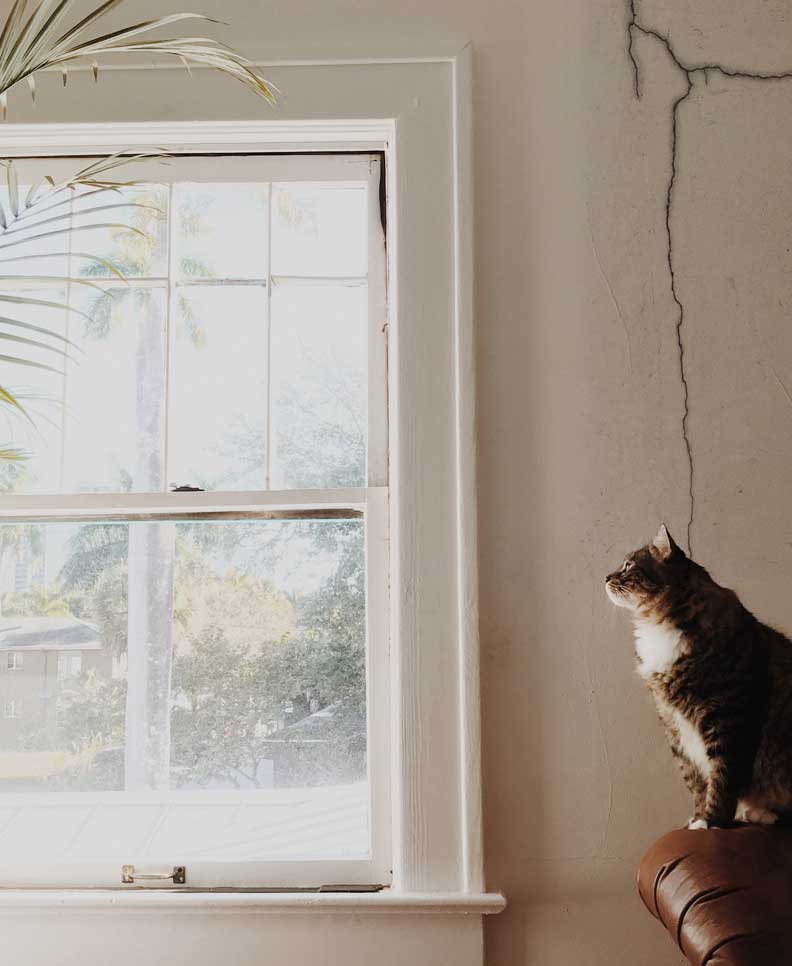Why Are My Walls Cracking?

Finding cracks in your home’s walls can quickly lead to worry.
Right away, you may start thinking about the potential damage that could be created if a repair is not completed soon.
Then your mind may start to estimate the cost involved with fixing the said cracks.
But more than likely, you’re also wondering how the cracks got there in the first place.
Here are four of the most common reasons why wall cracks may have appeared in your home.
Wall Shrinkage Foundation Cracks
Wall shrinkage foundation cracks usually appear wider at the top of the crack and then decrease in width as they travel vertically down the wall. They are predominately located below basement windows, above doors, at step-down areas and in the centre of long walls if control joints are absent.
Normally uniform in width, they also can appear as V-shaped cracks. Although crack lengths vary, they stop before reaching the bottom of the wall.
Shrinkage is formed due to a poor mix, drastic temperature change, rapid curing or improper or missing steel reinforcement during the concrete curing process.
Wall Settling Cracks
The most common wall settling crack displays vertically. These cracks are wider at the bottom and continue to increase in both length and width.
Horizontal wall cracks commonly appear in concrete block construction.
Although less common, diagonal cracks can arise at a corner of a concrete wall.
Wall setting cracks are caused when there are poorly prepared foundation footings and improperly placed or omitted steel stabilizers. Other causes include hydrostatic pressure from the sub-grade settlement, backfilling and horizontal loading from the structure above.
Floor Shrinkage Cracks
Depending on the installation method completed when pouring concrete floors, different causes are responsible for any subsequent cracking.
A floating slab, which is created from concrete that is poured over level loose-fill dirt or gravel, can crack when there is water run-off, flooding or leakage under the building.
Supported slab floors have edges that rest on the concrete footing’s lip. Significant soil settlement or improper reinforcement at pour can create a total collapse.
Slab on grade floors is created when a monolithic slab and the building footings are poured simultaneously. When cracks appear here, there may be poor footing settlement which could create structural damage.
Cosmetic Cracks
Sometimes, foundation cracks are not all that serious. Instead, these types of cracks are more aesthetic in nature and don’t require any type of repair work.
For example, angular cracks can appear in the top 12-16 inches of a brick wall that’s on top of a concrete foundation. This type of crack is caused by brick expansion during the hotter months and will likely occur every year – thus requiring no need for repair.
However, other cracks can cause significant damage and should not be ignored.
Deciding which cracks at your home or business require repair is best left to a professional. Contact the friendly team at Conterra Foundations for a quote today!